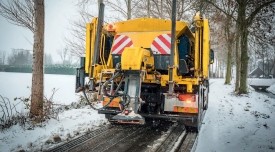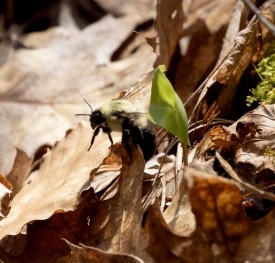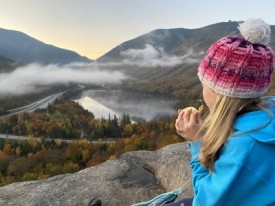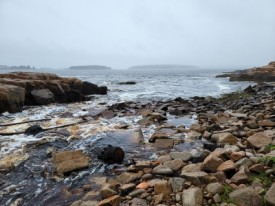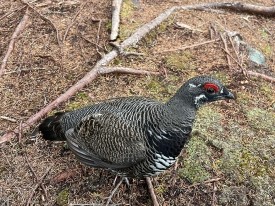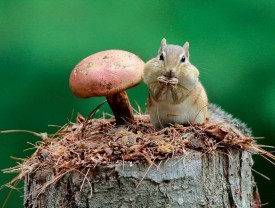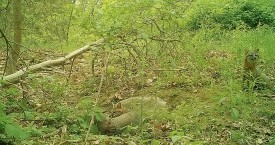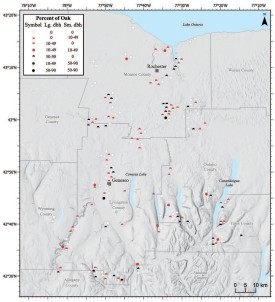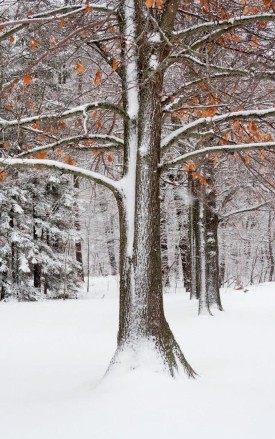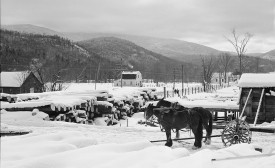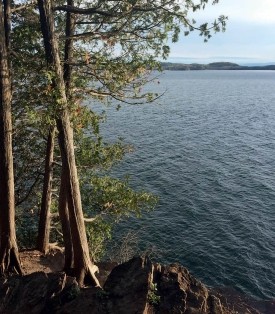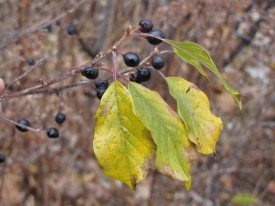Swirl a bit of maple syrup into your coffee or tea instead of refined table sugar. With this simple choice, you can enjoy an especially delicious morning beverage and support the sugarmakers…
Discoveries
Soil Management Shapes Understory Health
Beneath the towering beeches, wintergreen-scented birches, and bright red fall maples that dot the canopy of a northern hardwood forest, a vast array of plants makes up the understory. When…
Community Science Shows Bald Eagles Vulnerable to Lead Poisoning
From bald eagles to black bears to red foxes, many of the most iconic northeastern animals scavenge the remains of big game, leaving them vulnerable to consuming fragments of toxic lead…
Climate Change Impacts on Forest Soil Carbon Emissions
As microbes and plant roots metabolize organic matter in the soil, they release carbon dioxide into the atmosphere, a process called soil respiration. In the Northeast, where forests store…
Enhanced Salt Tolerance in Wood Frogs
Every year in the United States, road crews dispense more than 24 million metric tons of de-icing salts. In the snowy Northeast, where plows and salt trucks ply the roads for months on end,…
Do Bumble Bee Queens Seek Out Pesticides?
For conservationists seeking to reverse the global decline of bumble bee populations, pesticide contamination of soils is a significant concern. Although there has not been extensive research…
How Toxic Are Mushrooms in Connecticut River Valley Forests?
Mushrooms take up nutrients and minerals from whatever they are growing on, for example, wood they’re decomposing or, in the case of mycorrhizal fungi, forest soils and tree roots. They…
Have Shifting Seasons Impacted Outdoor Recreation in New Hampshire?
More people are taking an interest in outdoor recreation in New Hampshire at the same time as seasons are shifting, winters are warming, and storms are strengthening. To what extent are these…
What Happens to Forest Carbon in the Sea?
Most of the stories about carbon in the Northern Forest focus on sequestration and storage: all that carbon taken in and held by the region’s trees, plants, animals, fungi, and soils.…
Feral Forest Apples
It is not uncommon to find an apple tree deep in the woods, a reminder that the forest-dominated landscape we know today is relatively recent. In the 1800s, farmers cleared much of the region…
The Past – and Future – of Red Spruce
When the last ice sheet began melting some 20,000 years ago, the climate changed dramatically, and trees responded. As temperature and humidity shifted, tree populations expanded and…
Translocating Spruce Grouse to Help Endangered Populations
Angelena Ross has been studying spruce grouse for more than 20 years, first as a graduate student at State University of New York at Potsdam and now for the New York State Department of…
How Fungi Return to Disturbed Forest
Two common ways that forest fungi spread to new locations are by releasing spores into the wind, and through transport by animals, including the consumption – and defecation – of…
A Rare Glimpse into a Gray Fox Den
Gray foxes inhabit areas of dense cover, usually close to water. They den in the ground, cavities between rocks and ledges, brush piles, tree holes, and hollow logs. In 2018, in a wooded…
Western New York Forests Are Growing Less Fired Up
In 1900, much of the forest in the eastern United States was filled with oaks and other trees that tolerated fire. This structure in part reflected previous centuries of shaping by Indigenous…
The Sound of Oaks
The oaks are not doing well at Black Rock Forest. Their growth has slowed as new species of trees have found their way into the woods, and pathogens (such as the fungus that causes oak wilt),…
A Stormy Future for Carbon Offsets
Carbon offset programs often withhold 10 to 20 percent of offsets generated by a project, as a buffer against changes to the forest that might affect carbon storage over a century or more. But…
The Importance of Snow to the Bluff Forests of Lake Champlain
Red Rocks Park in South Burlington, Vermont, takes its name from the iron-tinged Monkton Quartzite, formed some 500 million years ago. But above the old red sandstone are bands of younger…
Landowner Preferences and Motivations for Controlling Invasive Plants
Invasive plants impact the ecological integrity and timber production potential of forests. One particularly problematic species is glossy buckthorn (Frangula alnus). A shade-tolerant,…
Land Protection and Taxes?
Land protection has increased in recent decades parallel with development pressures. Town leaders struggling to balance budgets and to provide services often resist conservation because of…




